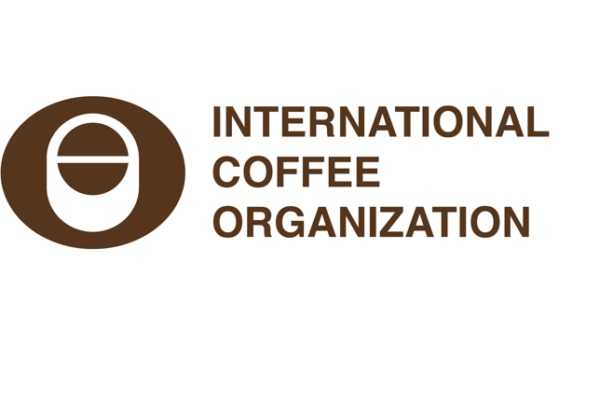MILAN – Coffee prices at new highs: according to the latest report from the International Coffee Organisation (ICO) released yesterday (Monday 5th August), the monthly average of the Ico composite indicator price reached a new high of 236.54 cents in July, 4.3% higher than the previous month.
World exports continued to grow, reaching a total of 10.78 million bags in June, up 3.8% on the previous year. It should be noted, however, that only Arabica shipments increased (+14.4%), while those of Robusta coffee were heavily down (-11.8%).
Exports for the first 9 months of the 2023/24 coffee year were also up by almost 9.5 million bags (+10.1%) to 103.469 million. Volumes increased in all coffee groups. Here are the highlights from the report.
The ICO Composite Indicator Price (I-CIP) averaged 236.54 US cents/lb in July, a 4.3% increase from June 2024. The I-CIP posted a median value of 237.05 US cents/lb and fluctuated between 224.77 and 251.68 US cents/lb. The July 2024 I-CIP is above the July 2023 I-CIP by 48.9%, with the 12-month rolling average at 185.86 US cents/lb.
The Colombian Milds and Other Milds increased by 3.0% and 3.5%, reaching 257.82 and 257.10 US cents/lb, respectively, in July 2024. The Robustas presented the strongest growth amongst all coffee groups, at 5.1%, reaching an average of 214.72 US cents/lb.
The Brazilian Naturals also appreciated, increasing by 4.6% to 239.70 US cents/lb in July 2024. ICE’s London market was also a strong driver of growth, expanding by 6.1% to 193.93 US cents/lb, the highest point since June 1977, whilst the New York futures market grew by 3.6% to 234.62 US cents/lb.
The I-CIP followed a bell curve pattern in July 2024, peaking on 9 July at 251.68 US cents/lb. Positive price pressure on the market continues to be applied, not only due to the small surplus of only 1 million bags in coffee year 2023/24, but also because of the cumulative 10-year average of the production balance remaining negative at -1.9 million bags.
However, news of potential cuts in interest and of dissipating frost in the main coffee producing regions of Brazil helped bring down the I-CIP through the rest of July.
The transmission of falling interest rates is such that, because high interest rates are making it more expensive to hold stocks, traders and roasters are forced to buy coffee on shorter term contracts, thereby increasing market activity and increasing short-term demand.
The Colombian Milds–Other Milds differential contracted from 2.00 to 0.72 US cents/lb. The Colombian Milds–Brazilian Naturals differential contracted 14.3% to 18.12 US cents/lb, whilst the Colombian Milds–Robustas differential also shrank, falling by 6.5% from June to July 2024, averaging 43.10 US cents/lb. Meanwhile, the Other Milds–Brazilian Naturals and Other Milds–Robustas differentials contracted 9.1% and 3.9%, reaching 17.40 and 42.38 US cents/lb, respectively. The Brazilian Naturals–Robustas differential expanded 0.1%, averaging 24.98 US cents/lb in July 2024.
The arbitrage, as measured between the London and New York futures markets, contracted 6.7% to 40.69 US cents/lb in July 2024.
The intra-day volatility of the I-CIP retracted by 0.9 percentage points, averaging 11.4% in July 2024. The Colombian Milds’ volatility decreased by 0.9 percentage points. However, the Other Milds’ volatility and the Brazilian Naturals’ volatility both shrank by 0.9 and 0.7 percentage points to 11.1% and 12.4%, respectively, from June to July 2024.
The Robustas’ volatility declined 1.7 percentage points to an average volatility of 12.1% for the month of July. The London futures market’s volatility also decreased by 3.2 percentage points to 13.4%. Lastly, the New York futures market’s volatility lost 1.3 percentage points, averaging 12.1%.
The London certified stocks continued to expand slightly in July 2024, increasing by 1.7% to 0.99 million bags. Certified stocks of Arabica coffee reached 0.87 million 60-kg bags, a 0.9% increase versus June 2024.
Exports by Coffee Groups – Green Beans
Global green bean exports in June 2024 totalled 9.78 million bags, as compared with 9.43 million bags in the same month of the previous year, up 3.8%. As a result, the cumulative total for coffee year 2023/24 to June 2024 is 93.76 million bags, as compared with 84.73 million bags over the same period a year ago, an increase of 10.7%. The Brazilian Naturals, once again, was the main group responsible for the overall strong growth observed in June 2024, accounting for 158.9% of the 0.36-million-bag net gain in total exports.
Exports of the Colombian Milds increased by 26.0% to 1.04 million bags in June 2024 from 0.82 million bags in June 2023. As a result, exports of the Colombian Milds for the first nine months of coffee year 2023/24 are up 12.1% at 9.15 million bags, as compared with 8.16 million bags in the first nine months of coffee year 2022/23.
The latest uptick in the exports was driven by Colombia, the group’s largest producer and exporter, with its June 2024 exports up 31.5% to 0.9 million bags as compared with 0.69 million bags in June 2023. The cumulative total for the origin is 8.16 million bags, up 14.3% versus the 7.13 million bags exported in October 2022 to June 2023. Benefitting from improved weather conditions, the recovery of Colombia’s production explains the strength and growth of its exports, although the cumulative export volume is still significantly down versus the recent past.
Shipments of the Other Milds increased by 2.4% in June 2024 to 2.34 million bags from 2.29 million bags in the same period last year. This is the third instance of positive growth since the beginning of the current coffee year, with the first coming in at the start. The cumulative volume increased by 0.7% in the first nine months of coffee year 2023/24 and is now at 16.69 million bags as compared with 16.57 million bags last coffee year.
Ethiopia, Guatemala and Peru were the three main drivers of the region’s 2.4% positive growth in exports, with a combined net increase of 0.24 million bags, while Costa Rica, Honduras and Nicaragua were the three main drivers of negative growth, with a combined net decrease of 0.16 million bags.
The Other Milds has the lower cumulative-to-date growth rate of the Milds, below 1% versus the double-digits expansion of the Colombian Milds. There are specific explanations behind the different growth rates and their directions among the origins of these two groups of coffee, but there may also be a general, underlying reason for the weaker growth rate of the Other Milds. The average price differential between the two Milds in coffee years 2020/21-2022/23 was 14.6 US Cents/lb to the Colombian Milds. However, in coffee year 2023/24 to date (July 2024), the differential narrowed to 1.1 US Cents/lb.
Green bean exports of the Brazilian Naturals increased in June 2024, rising by 22.3% to 3.1 million bags from 2.53 million bags in June 2023. For the first nine months of coffee year 2023/24, green bean exports of the Brazilian Naturals amounted to 32.12 million bags, up 24.5% from 25.79 million bags over the same period a year ago. The sharp growth rate stems from the 20.3% and 81.5% increases in exports of the Brazilian Naturals from Brazil and Ethiopia, respectively, which rose to 2.45 million bags and 0.49 million bags in June 2024 from 2.04 million bags and 0.27 million bags, respectively, in June 2023.
Green bean exports of the Robustas were down 12.7% to 3.3 million bags in June 2024 from 3.78 million bags in June 2023. This is the second consecutive month of negative growth. As a result, the growth rate of the cumulative total decelerated down to 4.7% in June 2024 from 6.8% in May 2024, with the total shipment at 35.81 million bags, as compared with 34.21 million bags in the first nine months of coffee year 2022/23.
The main driver of June’s decrease in Robusta exports was Vietnam, which shipped 1.11 million bags as compared with 2.23 million bags in June 2023, down 50.28%. The downturn was more than sufficient to overwhelm the 254.6% increase in the exports of Brazil, which shipped 0.82 million bags in June 2024 as compared with 0.23 million bags in June 2023. For the year to date, Brazil’s green Robustas exports amount to 6.28 million bags as compared with 1.02 million bags over the same period over a year ago, up 518.7%.
Exports by Regions – All Forms of Coffee
Exports of all forms of coffee from Asia & Oceania decreased by 33.0% to 2.43 million bags in June 2024. The latest downturn is the seventh in total and fifth consecutive monthly decline observed in the region for the current coffee year, with the cumulative total falling by 9.8% to 32.35 million bags as compared to 35.87 million bags in the same period a year ago.
Once again, the region’s general direction was dictated by Vietnam, Asia & Oceania’s largest producer and exporter of coffee, whose exports fell by 50.2% in June 2024 to 1.2 million bags. The latest downturn marked the seventh in total and fifth consecutive decline for Vietnam in coffee year 2023/24, and as a result the country’s cumulative exports up to June 2024 fell to 21.48 million bags from 24.11 million bags between October 2022 and June 2023, down 10.9%.
The dramatic decrease is reported to be a consequence of the country’s low levels of stocks, which were used in recent months to support a relatively robust volume of exports but are now near depleted. The domestic industry is waiting for new supply from the 2024/25 harvest, the start of which is still two months away.
Exports of all forms of coffee from Africa increased by 31.6% to 1.75 million bags in June 2024 from 1.33 million bags in June 2023. As a result, the cumulative total of 11.03 million bags for the first nine months of coffee year 2023/24 is up 13.7%, as compared with the 9.7 million bags shipped in coffee year 2022/23.
Ethiopia and Uganda were the driving forces behind the region’s growth in June 2024, with their exports having increased by 80.0% and 18.3%, respectively, to 0.72 million bags and 0.67 million bags as compared with 0.4 million bags and 0.56 million bags in June 2023. The Uganda Coffee Development Authority reported that the strong June 2024 exports were a result of the newly harvested bigger Robusta crop from the Greater Masaka region and South Western region reaching the market.
As for Ethiopia, the origin is continuing to enjoy the combined benefits of resolution of contract disputes (arising from a mismatch between local purchasing prices and global market prices that had affected the volume of exports in the first half of calendar year 2023) and logistics.
Ethiopia’s exports were negatively affected by the lack of ships available at Djibouti, the main point of exit for the country, due to the insecurities around the Red Sea. It was reported that, in early 2024, the availability of vessels was reduced to one per month when, previously, at least one was available per day. However, on 28 March 2024, Maersk, a shipping company, released a statement lifting its suspension of all bookings to and from Djibouti, which was implemented on 30 January 2024.
In June 2024, South America’s exports of all forms of coffee increased by 34.7% to 4.85 million bags. As a result, the cumulative total of 49.12 million bags for the first nine months of coffee year 2023/24 is up 33.8% as compared to the 36.7 million bags shipped in coffee year 2022/23.
Brazil was the source of the strong positive growth, which saw its exports increase by 35.9% in June 2024 to 3.59 million bags from 2.64 million bags in June 2023. Fundamentally, the strong export performance of both Brazil and South America reflects the former’s good harvests in coffee years 2022/23 and 2023/24, which are estimated to be up by 8.4% and 9.2%, respectively.
In June 2024, exports of all forms of coffee from Mexico & Central America were down 4.2% to 1.76 million bags, as compared with 1.84 million in June 2023. As a result, the cumulative total exports remain down at −6.4%, decreasing to 10.97 million bags, as compared with 11.72 million bags for the same period a year ago (October 2022 to June 2023). The June 2024 downturn is mainly a reflection of the negative 11.4% and 21.1% growth rates of Honduras and Nicaragua, respectively. Exports from Honduras continue to be hampered by its off-years in the biennial production cycle, while Nicaragua is still working its way through the fallout from the bankruptcy of Mercon Coffee Group in December 2023, a coffee trader and the owner of CISA Exportadora, a company responsible for more than half of Nicaragua’s coffee exports.
Exports of Coffee by Forms
Total exports of soluble coffee increased by 6.5% in June 2024 to 0.94 million bags from 0.88 million bags in June 2023. In the first nine months of coffee year 2023/24, a total of 9.18 million bags of soluble coffee was exported, representing an increase of 5.3% from the 8.72 million bags exported in the same period during the previous coffee year.
Soluble coffee’s share in the total exports of all forms of coffee for the year to date was 8.9% in June 2024, down from 9.3% in the same period a year ago. Brazil was the largest exporter of soluble coffee in June 2024, shipping 0.29 million bags.
Exports of roasted beans were down 24.4% in June 2024 to 59,467 bags, as compared with 78,618 bags in June 2023. The cumulative total for coffee year 2023/24 to June 2024 is 0.53 million bags, as compared with 0.54 million bags in same period a year ago.

















